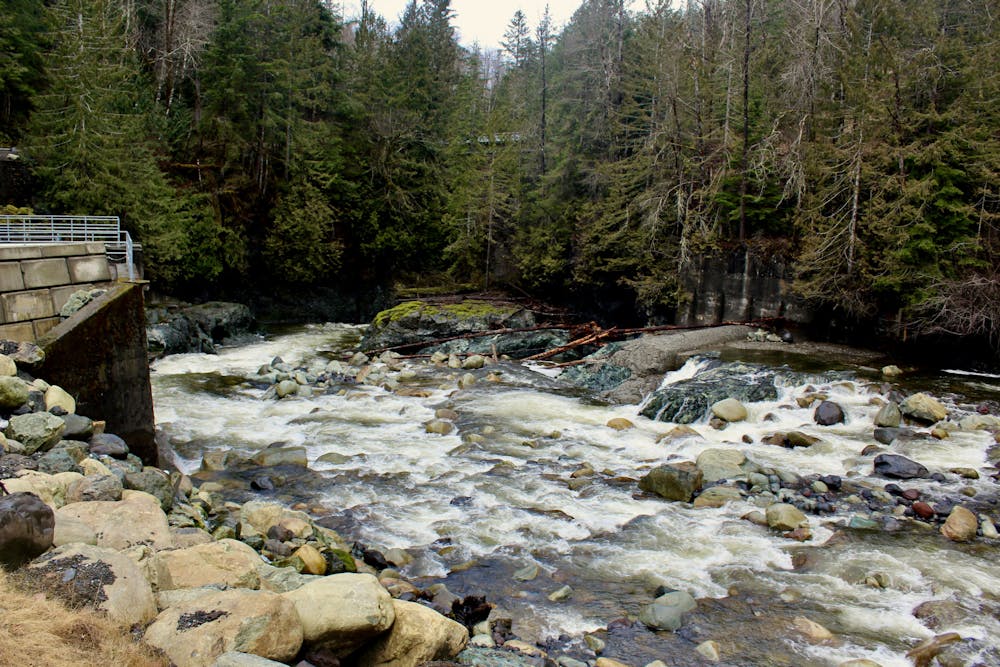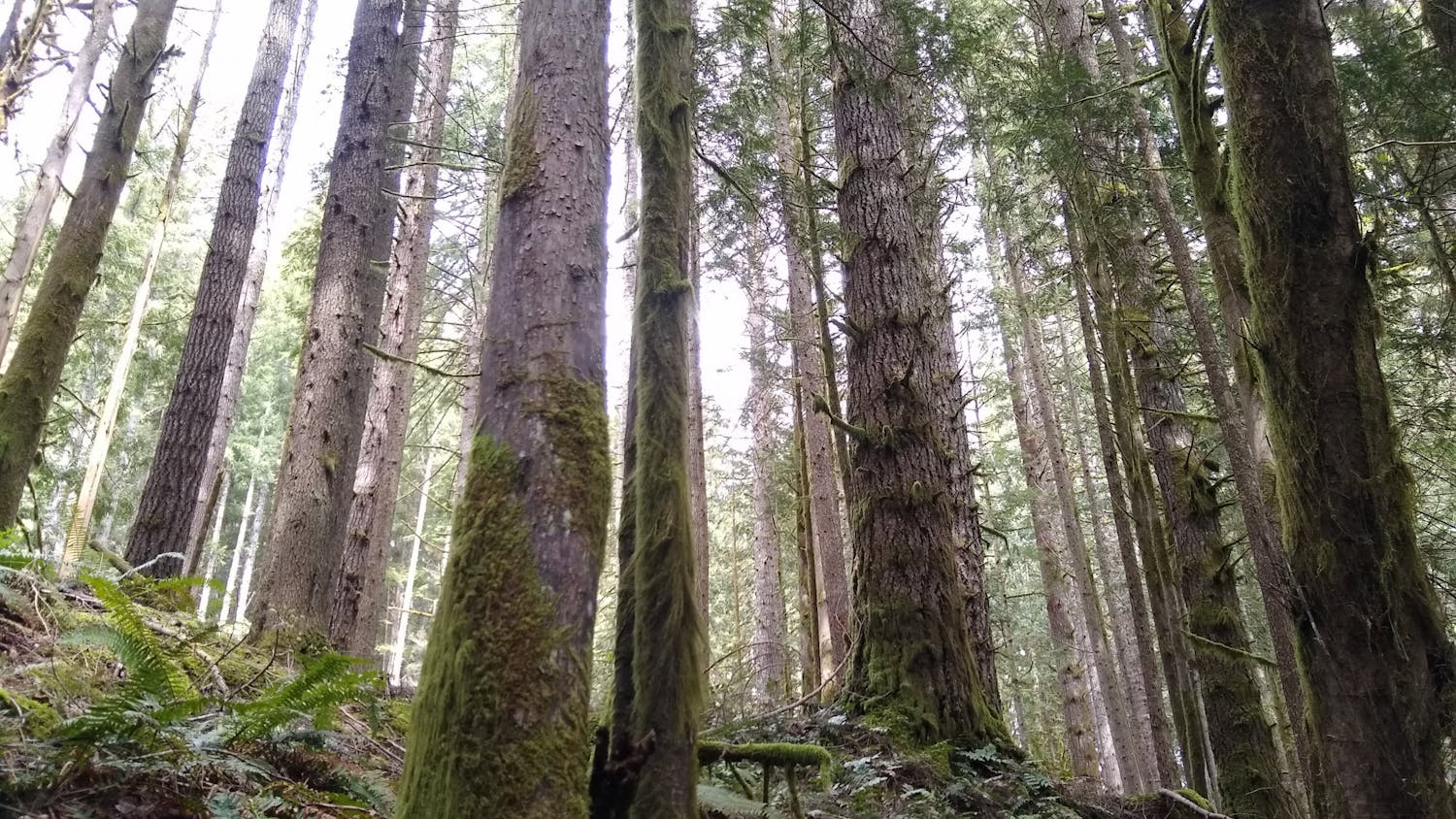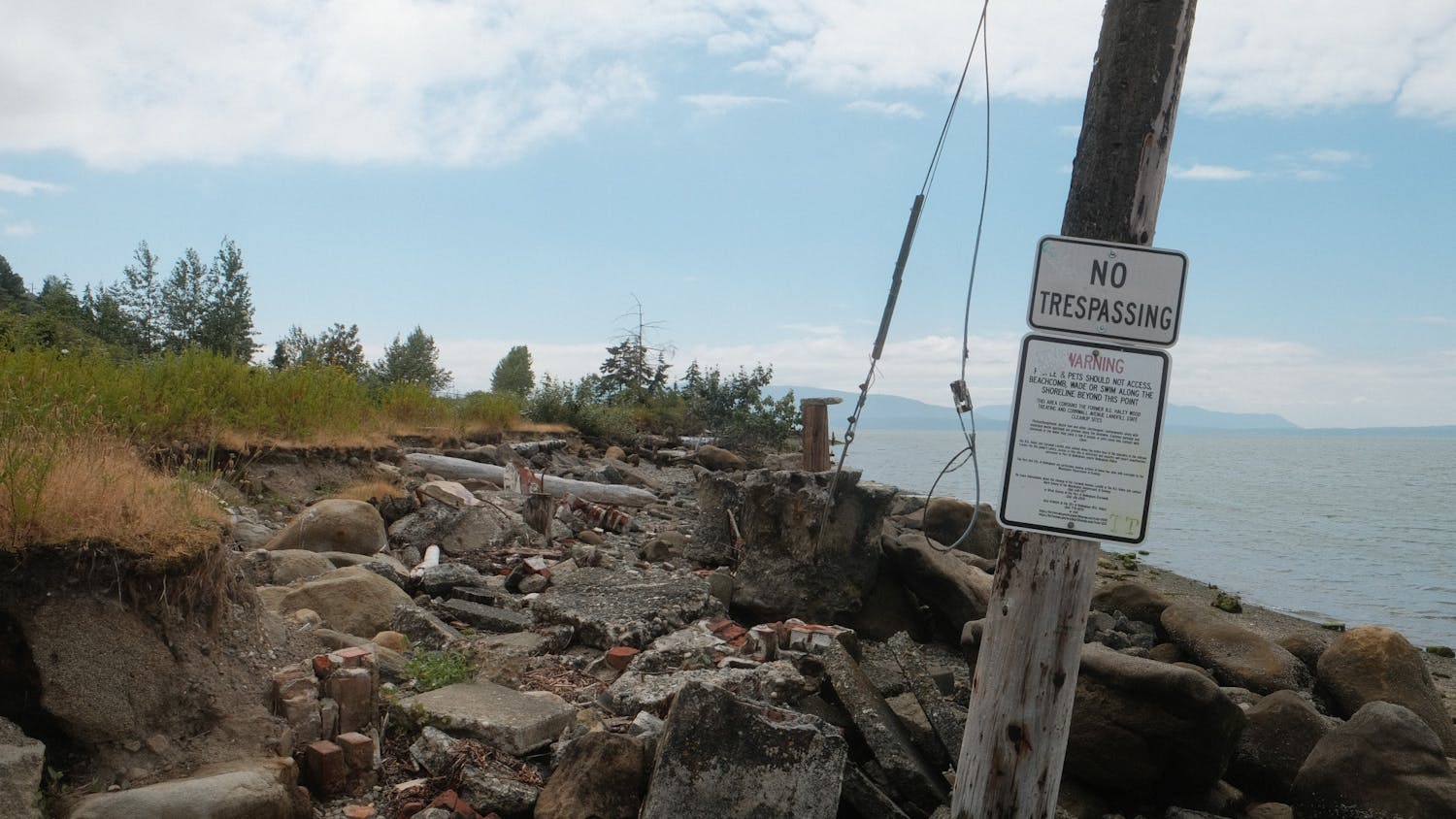The often competing interests of the Department of Natural Resources and environmental activists have set the stage for some of the most dramatic conflicts in the sphere of environmental protest. A majority of timber sales don’t receive local or even global attention.
Brokedown Palace is a 69-acre stand of trees that overlooks the Middle Fork Nooksack River near Deming, Washington. Last month, the Washington State Department of Natural Resources began moving forward with plans to sell the acreage as timber.
Recent snowfall in February left the DNR unable to visit the site and evaluate the terrain for slope and stability concerns. Now, the department must resubmit its paperwork and once again go through an approval process. After a 30-day public comment period, the final decision will be left to the Board of Natural Resources.
“There’s a pretty in-depth, long process of determining what gets logged and what doesn’t,” said Cory McDonald, a forester for DNR’s Northwest Region.
The DNR’s timber sale process is not conducive to community feedback, said Alexander Harris, the Land & Water Policy Manager for environmental advocacy group RE Sources. Contrary to the DNR’s 30-day period of allocated time for public comment, Harris noted that the 14-day feedback time for the Forest Practice Application often overlaps with the 14-day State Environmental Policy Act comment period, both of which the DNR must submit before a sale is even considered.
“I think it’s important for the [DNR] to conduct logging operations on the rest of their lands,” Harris said. “But I think they need to acknowledge that the current system is not working very well.”
For the Brokedown Palace timber sale, Harris said he did not receive any notification until Friday, Feb. 3 at 8 p.m., and received additional paperwork six days later, essentially limiting the public comment period to 20 days.
“The process wasn’t set up to actually gauge public feedback or to get public buy-in. It was set up to check a box,” Harris said.
Members of the DNR team disagree, noting that they take public comment very seriously and that quality over quantity of feedback is what makes the most impact.
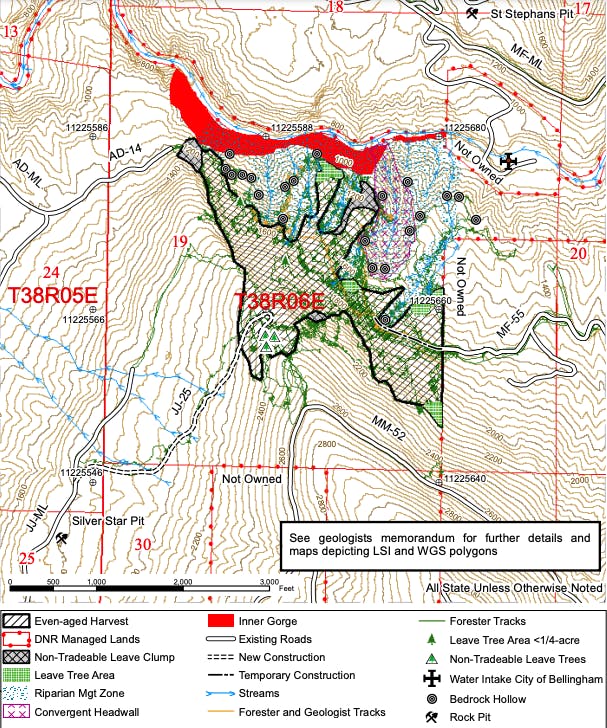
A technical map of Brokedown Palace from the Department of Natural Resources’ Forest Practice Application submitted on Feb. 3, 2023, with the timber sale boundary shown in black. The boundary often closely borders a convergent headwall and several bedrock hollows, both of which are features that increase the risks for landslides, according to Alexander Harris. // Photo courtesy of the Department of Natural Resources
If the timber sale is approved, the DNR will receive payment for it. K-12 school construction funds, various universities (including Western Washington University), local libraries and EMS services are just some of the DNR’s many beneficiaries that receive funding from timber sales.
But these funds come at a cost.
“Cutting down trees does have adverse environmental impacts,” said David Wallin, a professor in the Environmental Sciences Department at Western.
The Front reported on a similar stand of trees in the Middle Fork Nooksack watershed that ultimately did end up going to auction.
Harris and the RE Sources team were aware of the sale but said it wasn’t concerning enough to merit a response.
“This [Brokedown Palace] sale is far more concerning for so many reasons,” Harris said.
Unlike many of the forests in Western Washington that have been clear-cut and transformed into single-species tree plantations, Brokedown Palace has remained virtually untouched for more than 100 years after it was first logged. The forest holds an immense amount of biodiversity that would be lost if converted to timber.
Another concern is the steep slopes, some up to 150 percent, that make up a portion of the planned logging site. Harris said the slopes are a lot steeper than a majority of the DNR’s past logging sites. Removing trees at these inclines increases the amount of water that flows directly into and on top of the ground. The loss of dense, underground tree roots, which tend to rot and decompose after a tree’s trunk is felled, and increased water flow heightens landslide risk at these sites.
Just below Brokedown Palace sits the remains of the Middle Fork Dam. The City of Bellingham, American Rivers, the Nooksack Indian Tribe, the Lummi Nation and the Washington Department of Fish and Wildlife were the main organizers of the project that worked to remove the dam and create a fish passage. After its completion in 2022, several endangered species of fish, including the spring Chinook salmon, steelhead and bull trout are now able to access 16 miles of previously inaccessible spawning habitat.
Even if Brokedown Palace were to be logged with buffer zones in place near rivers and streams, there would be a heightened risk of depositing an immense amount of sediment into the river below, which can clog fish gills and interfere with reproduction.
“It's ironic that a sister agency of these other agencies is planning to clear cut just above the Middle Fork, which does threaten to undermine a portion of the progress that was just achieved,” Harris said. “To me, that is probably the most obvious example of why this timber sale is inappropriate.”
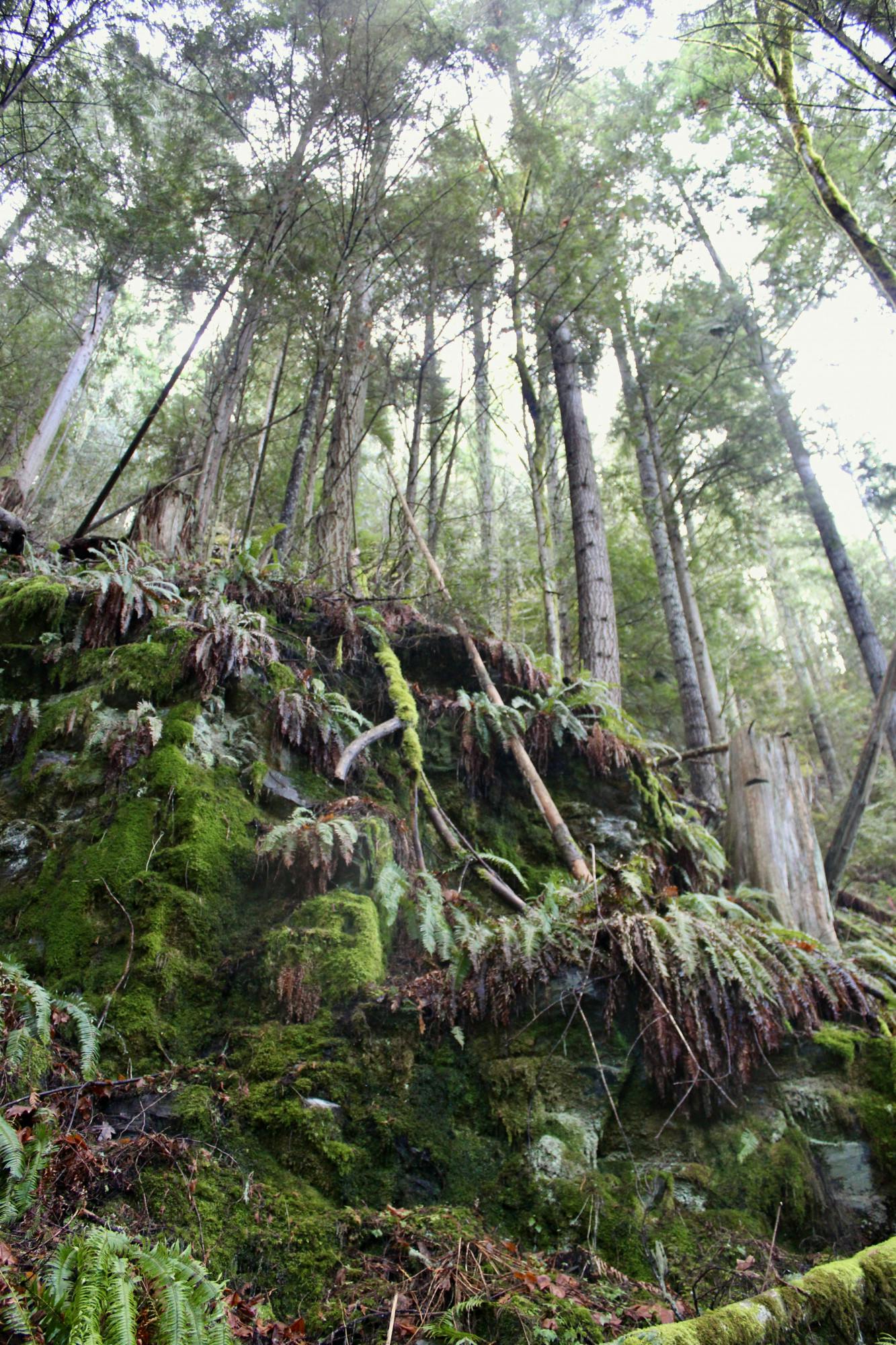
Steep slopes in the Brokedown Palace forest in Deming, Wash., in January 2022. Slopes like this, if logged, may increase unstable soil and the risk for flooding and landslides. // Photo courtesy of RE Sources
Forests store an immense amount of carbon, and Brokedown Palace is no exception. The creation of timber products releases an immense amount of carbon emissions that would have otherwise stayed trapped in the trunks, roots and leaves of trees.
An increase in carbon contributes to climate change, which is already affecting Whatcom County. Researchers at Western estimate that by 2075, the Middle Fork’s winter flow rate may double compared to historic streamflows if carbon emissions continue.
“The DNR is operating under the assumption as if climate change will not impact anything to do with the watershed. They’re operating with 20th-century assumptions instead of with a 21st-century lens,” Harris said.
RE Sources members have asked that the DNR pause this timber sale in the hopes that the forest may be a prime candidate for one of several carbon projects, including Washington’s new cap-and-invest program and upcoming House and Senate Bills. Each would allow the DNR to sell forest as carbon credits, and not as timber, to private corporations looking to offset their carbon emissions.
RE Sources has had over 1,000 individuals send emails to the DNR so far, urging them to halt, or at least pause, timber sale plans. In addition, RE Sources submitted their own technical comments, providing the DNR with a more scientific explanation as to why they should delay or cancel the sale.
“When we're just getting emails on an actual proposal, that doesn’t really give the department the best opportunity to truly evaluate what’s being said,” McDonald said.
He added that public feedback should be provided when the DNR is conducting its environmental impact assessment process.
Although Brokedown Palace has garnered the public's attention, forests just like it often don’t receive any public comment. Harris said it’s the public’s input that’s needed to ensure healthy forest ecosystems stay intact.
More broadly, harvesting trees on a longer rotation, planting more diverse tree species after a timber harvest and carefully considering where to log to minimize harvest impact are just some of the ways to practice more sustainable harvesting techniques, Wallin said.
“If anybody tells you there’s an easy solution, they’re incredibly naive,” he said.
Riley Weeks was a city news beat reporter for The Front. She is a senior in the environmental studies/journalism program and is working to complete minors in American Indian Studies and Law, Diversity and Justice. When she's not reporting, Riley loves to hike, bake and read.
You can reach her at riley.thefront@gmail.com.


